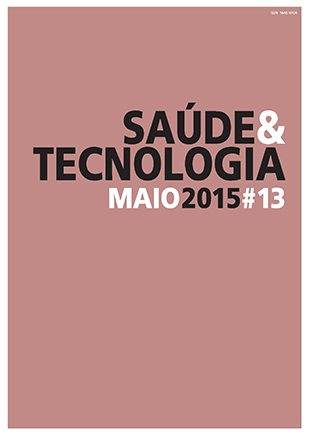Relative renal function estimate by renal scintigraphy with 99mTc-DMSA: influence of attenuation correction methods
DOI:
https://doi.org/10.25758/may.1154Keywords:
Kidney depth, Renal scintigraphy (99mTc-DMSA), Raynaud’s method, Taylor’s method, Tonnesen’s method, Geometric meanAbstract
Introduction – The estimate of relative renal function (RRF) through scintigraphy with dimercaptosuccinic acid labeled with Technetium-99 metastable (99mTc-DMSA) may be influenced by kidney depth (KD), due to attenuation by soft tissue surrounded kidneys. Considering that rarely this KD is known, several methods for attenuation correction (AC) have been developed, namely those using empirical formulae, such as Raynaud, Taylor, or Tonnesen methods, or by direct calculation of the geometric mean (GM). Objectives – To identify the influence of different AC methods on RRF estimate by scintigraphy with 99mTc-DMSA and to evaluate the respective KD variability. Methods: Thirty-one patients were referred for 99mTc-DMSA scintigraphy and underwent the same acquisition protocol. Processing was performed by 2 independent operators, three times per exam, changing for the same processing the methods for the FRR determination: Raynaud’s method, Taylor’s method, Tonnesen´s method, GM, and without AC (WAC). Friedman's test was used to identify the influence of the different AC methods on RRF estimate and Pearson’s correlation test was used to evaluate the association and significance between KD and the variables age, weight, and height. Results – Friedman’s test indicated that there were significant differences between methods (p=0.000), except for WAC/Raynaud, Tonnesen/GM, and Taylor/GM (p=1.000) comparisons, for both kidneys. Pearson’s test showed a strong positive correlation between weight and the three methods of KD estimation. Conclusions – Taylor’s method, regarding the three methods of KD calculation, is the closest to GM. The choice of the attenuation correction method influences significantly the quantitative parameters of FRR.
Downloads
References
Shackett P. Nuclear medicine technology: procedures and quick reference. 2nd ed. New York: Lippincott Williams & Wilkins; 2008. ISBN 9780781774505
Fommei E, Volterrani D. Renal nuclear medicine. Semin Nucl Med. 1995;25(2):183-94.
Ono CR, Sapienza MT, Machado BM, Pahl MM, Liberato Jr WP, Okamoto MR, et al. Padronização do método para cálculo da captação renal absoluta do 99mTc-DMSA em crianças [Standardization of a method to calculate absolute renal uptake of 99mTc-DMSA in children]. Radiol Bras. 2006;39(1):33-8. Portuguese
Inoue Y, Yoshikawa K, Suzuki T, Katayama N, Yokoyama I, Kohsaka T, et al. Attenuation correction in evaluating renal function in children and adults by a camera-based method. J Nucl Med. 2000;41(5):823-9.
Argenta J, Brambilla CR, Silva AM. Correção de atenuação em aquisições renais com 99mTc-DMSA: comparação entre os métodos de Raynaud e da média geométrica [Attenuation correction for renal scintigraphy with 99mTC-DMSA: analysis between Raynaud and the geometric mean methods]. Rev Bras Física Méd. 2010;4(1):75-8. Portuguese
Piepsz A, Colarinha P, Gordon I, Hahn K, Olivier P, Roca I, et al. Guideline on 99mTc-DMSA scintigraphy in children. Eur J Nucl Med. 2001;28(3):BP37-41.
Lythgoe MF, Gradwell MJ, Evans K, Gordon I. Estimation and relevance of depth correction in paediatric renal studies. Eur J Nucl Med. 1998;25(2):115-9.
Taylor A, Lewis C, Giacometti A, Hall EC, Barefield KP. Improved formulas for the estimation of renal depth in adults. J Nucl Med. 1993;34(10):1766-9.
Yapar AF, Aydin M, Reyhan M, Yapar Z, Sukan A. The conditions for which the geometric mean method revealed a more accurate calculation of relative renal function in 99mTc-DMSA scintigraphy. Nucl Med Commun. 2005;26(2):141-6.
Lima MC, Ramos CD, Brunetto SQ, Lima ML, Ferreira U, Etchebehere EC, et al. Estimation of absolute renal uptake with technetium-99m dimercaptosuccinic acid: direct comparison with the radioactivity of nephrectomy specimens. Sao Paulo Med J. 2008;126(3):150-5.
Velosa SF, Pestana DD. Introdução à probabilidade e à estatística. Lisboa: Fundação Calouste Gulbenkian; 2008. ISBN 9789723111507
Lassmann M, Biassoni L, Monsieurs M, Franzius C, Jacobs F. The new EANM paediatric dosage card. Eur J Nucl Med Mol Imaging. 2007;34(5):796-8.
Renal DMSA uptake analysis operator guide. Milwaukee: GE Medical Systems; 2003.
Sousa E, Carapinha MJ, Lucena F, Vaz T, Vieira L. Impact of the background region of interest in the relative renal function. In Annual Congress of the European Association of Nuclear Medicine, Birmingham (UK), October 15-19, 2011 [cited 2014 Jul 13]. Available from: http://repositorio.ipl.pt/handle/10400.21/212
Guimarães JB. Análise estatística utilizando o SPSS: guia prático de comandos. Salvador, BA: Autor; s.d.
Downloads
Published
Issue
Section
License
Copyright (c) 2022 Saúde e Tecnologia

This work is licensed under a Creative Commons Attribution-NonCommercial-NoDerivatives 4.0 International License.
The journal Saúde & Tecnologia offers immediate free access to its content, following the principle that making scientific knowledge available to the public free of charge provides greater worldwide democratization of knowledge.
The journal Saúde & Tecnologia does not charge authors any submission or article processing charges (APC).
All content is licensed under a Creative Commons CC-BY-NC-ND license. Authors have the right to: reproduce their work in physical or digital form for personal, professional, or teaching use, but not for commercial use (including the sale of the right to access the article); deposit on their website, that of their institution or in a repository an exact copy in electronic format of the article published by Saúde & Tecnologia, provided that reference is made to its publication in Saúde & Tecnologia and its content (including symbols identifying the journal) is not altered; publish in a book of which they are authors or editors the total or partial content of the manuscript, provided that reference is made to its publication in Saúde & Tecnologia.







